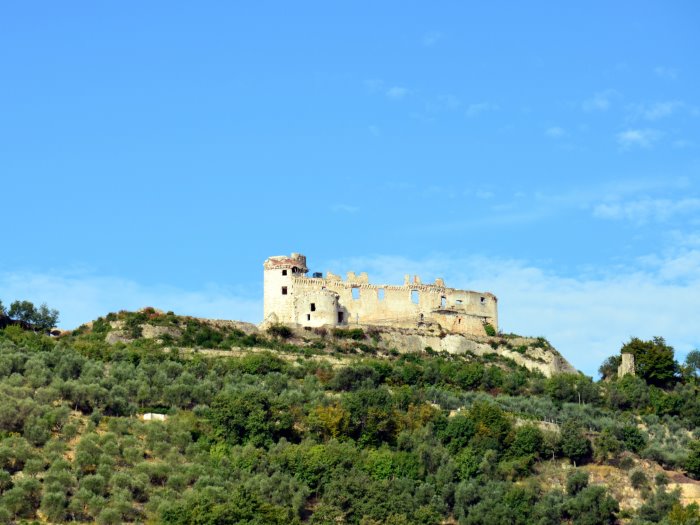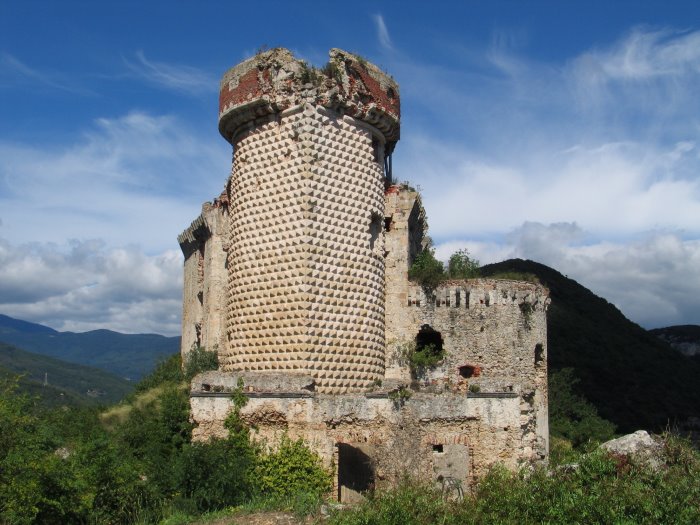Trail del Marchesato unfolds along ‘Sentiero Ermano Fossati’ – a Finale Ligure Track in memory of the Expert Squad Leader from the Finale Ligure Firefighters Detachment, Ermano Fossati. He tragically passed away in 2010 while on duty, aiding in an accident on Melogno Pass. This trail as well as the path raced honor his memory.
Embark from Finalborgo (and circle back!)
 Finalborgo stands as one of Italy’s ‘Most Beautiful Villages’ (“Borghi più belli d’Italia”) nestled just moments away from the sea, captivating visitors with its timeless allure.
Finalborgo stands as one of Italy’s ‘Most Beautiful Villages’ (“Borghi più belli d’Italia”) nestled just moments away from the sea, captivating visitors with its timeless allure.
Its name, stemming from Burgum Finarii, evokes a Roman-era borderland (ad fines) and served as the administrative heart of the Del Carretto marquisate from the 14th to the 16th century. Enclosed by remarkably preserved medieval walls, punctuated by semicircular towers and only interrupted at the gateways, the Village (“Borgo”) of Finale (distinct from the Marina) immediately envelops guests in a sense of security and serene embrace. The essence of ancient defense and community living endures in its maze-like streets, creating charming vistas within its intimate spaces.
Wandering through narrow alleys, each square is a discovery and a surprise, showcasing wonders in the ‘stone of Finale’ (“Pietra del Finale”), the slate that adorns doorways, shapes columns, diamonds, and ornaments.
The Historic Center of Finalborgo, the ancient Burgum Fiunarii, for several centuries the capital of the Marquisate and the administrative center of Finale, stands strategically on the alluvial plain at the confluence of the Pora and Aquila streams.
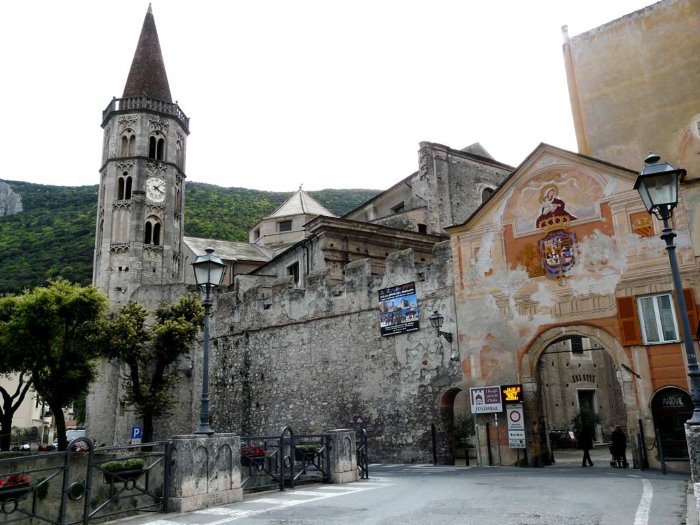
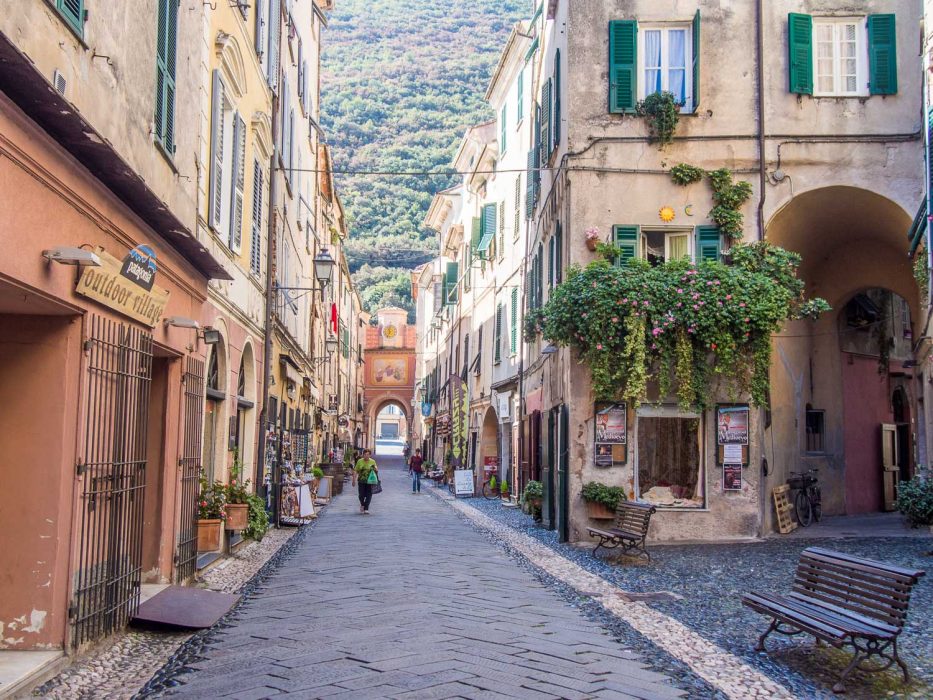
Castel San Giovanni
Between 1640 and 1644, a fort named Forte S. Giovanni was erected with the purpose of strengthening defenses near the meeting point of the Pora and Aquila valleys. This fort ingeniously integrated the ancient medieval tower, as mentioned by Filelfo and depicted in a 1571 drawing, which connected Finalborgo’s walls on Mount Becchignolo. The project was overseen by Ferdinando Glazer.
The construction featured a tenaille on its southern front and a series of curtains comprising a high scarp with a coping cord and a low overhanging parapet. These walls lacked openings and sported hanging guardrooms on the corners. Further enhancements to the fortress were carried out by the Spanish engineer Gaspare Beretta between 1674 and 1678.
Abandoned by the Spanish in 1707, the fortress suffered partial destruction after being submitted to Genoa in 1713. By 1822, it was repurposed as a penitentiary. Since 1960, it has been under state ownership and has undergone complete restoration in recent years.
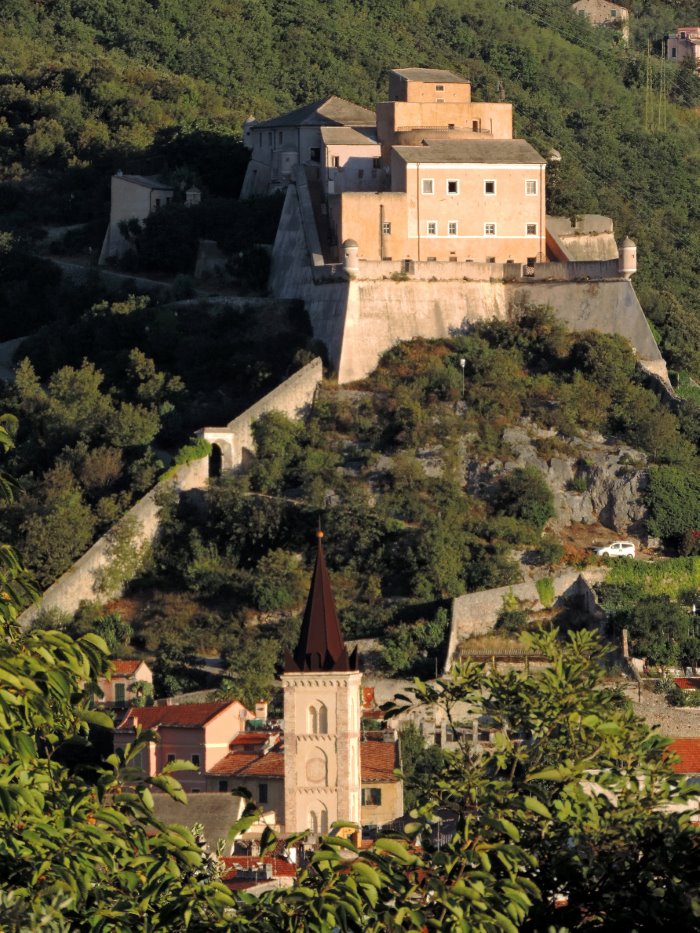
Antri Rossi. A beautiful cliff abundant with climbing routes ranging from 4th grade up to 6c+.
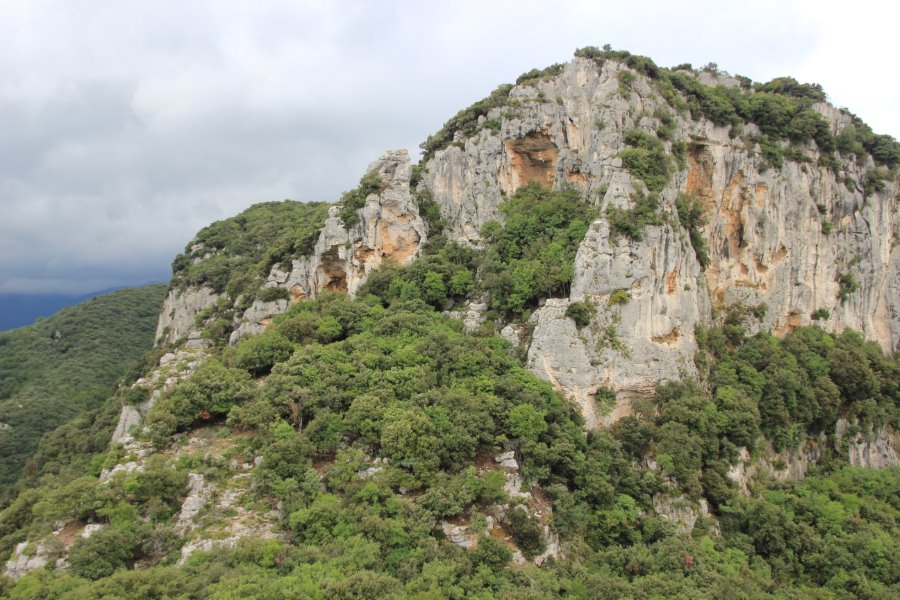
This stunning south-facing wall provides an exceptional viewpoint of the Finale Ligure area, almost resembling a balcony overlooking the sea. What’s truly remarkable is the beauty of this small area where, within a few meters, you encounter a diverse range of climbing features— from slabs to overhanging pockets, cracks to chimneys.
Sheltered from the wind and not too tall, it offers excellent climbing on well-crafted rock. While the routes predominantly emphasize strength, technical climbs are also available. The rock is well-protected, not slippery, and each route is named at its base.
The Arma Pollera is situated in the Rio della Valle area, part of the Montesordo-Pianmarino hamlet in the municipality of Finale Ligure
The term “Arma” originates from the local dialect in Liguria, specifically used to signify a cavern. This term is commonly applied due to the historical context, as many of the significant “caves” in the Finalese were previously inhabited “caverns” by our ancestors in prehistoric times. This historical association clarifies why the term “Arma” is frequently used to describe these caves.
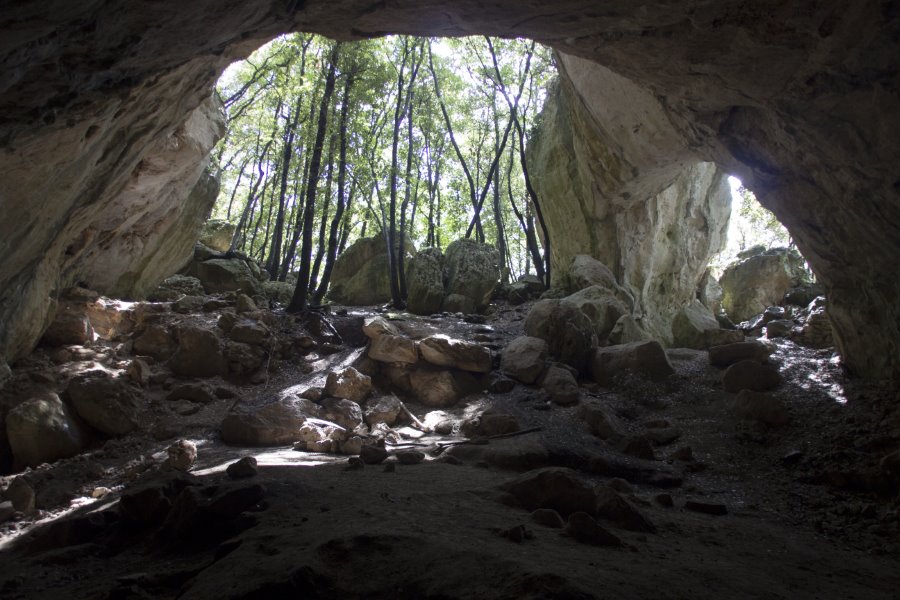
Bric del Frate (only on 38KM and 60KM Trails)
The rocky bastion of Bric del Frate (390 m) stands out prominently along the highway ‘Autostrada dei Fiori’. As one approaches from Savona and reaches the Feglino exit, this landmark dominates the northern expanse of the Montesordo Plateau, presiding over the charming karst landscape of Pian Marino.
Its striking silhouette, resembling a sleeping giant atop the steep, verdant slopes, is a captivating sight visible from the highway, leaving an awe-inspiring impression.
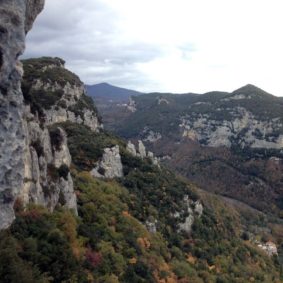
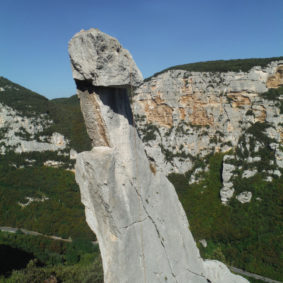
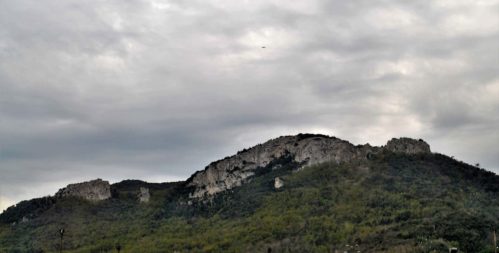
Bric di Pianarella (only on 38KM and 60KM Trails)
The Bric di Pianarella stands as the largest rock face within the rich expanse of Finale Ligure. It’s easily noticeable from the ‘Autostrada dei Fiori’ highway featuring immense reddish erosions. Its climbing routes, stretching up to 300 meters, provide significant exposure and moderate to high levels of difficulty.
This rock epitomizes the fantastic limestone that has garnered Finale’s acclaim not only in Italy but also beyond its borders.
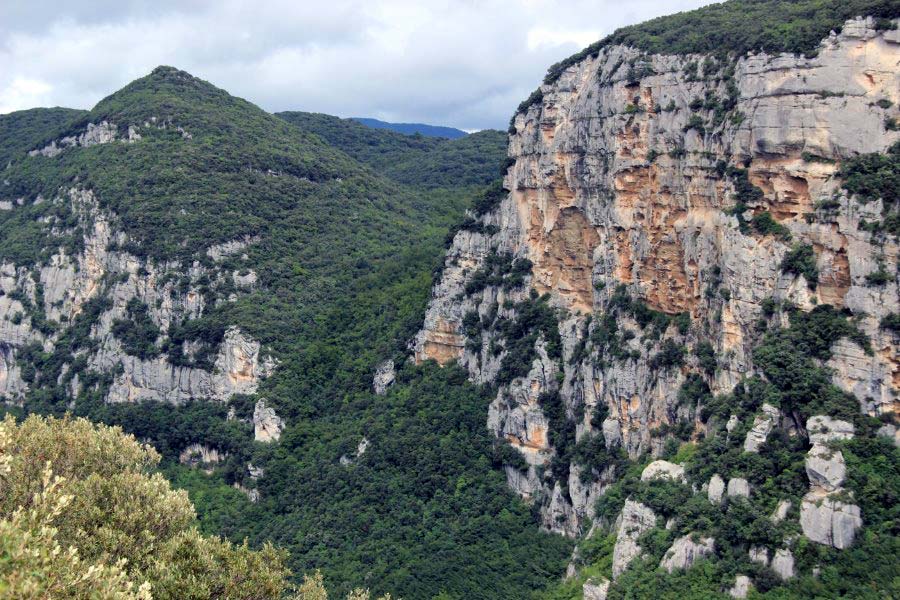
Le Manie (only on 60KM Trail)
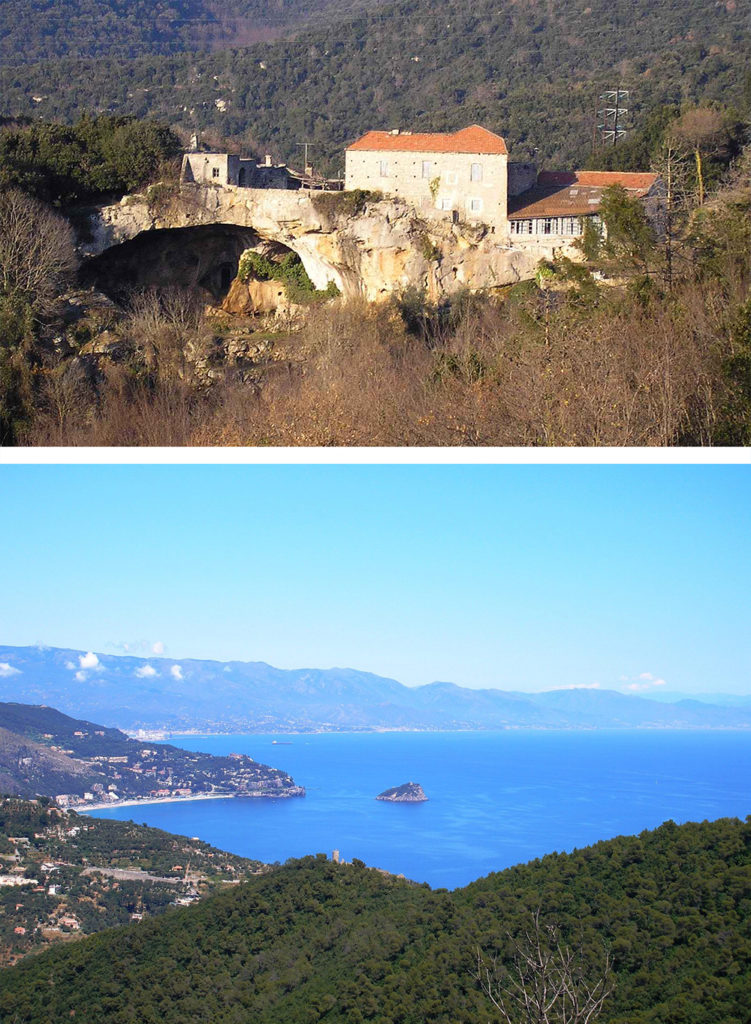
Le Mànie is an inland location nestled within the municipality of Finale Ligure.
Renowned for its valuable viticultural agricultural area, they also hold significance in pastoralism. The expansive grassy meadows, popular for spring picnics, have been frequented by shepherds from the Maritime Alps since ancient times.
The abundance of caves, especially the enchanting “Arma delle Fate” and the captivating “Grotta dell’Arma,” whispers tales of ancient human habitation in this region.
During the Roman era, the Aemilia Scauri road was constructed, later undergoing enhancements for safety. Renamed Julia Augusta, known today as Val Ponci due to the remains of five magnificent Roman bridges, three of which are still in use.
The Church of San Giacomo served as the Sunday gathering spot for farming families that still populate Le Manie, animating the various beloved trattorias cherished by both locals and visitors.
Le Manie serves as a vibrant green haven, easily accessible to food and wine enthusiasts due to its short distance from the sea. Many trattorias and agriturismi offer the finest in local cuisine.
The entire region is crisscrossed by an extensive network of trails catering to trekking, Nordic walking, mountain biking and gravity biking enthusiasts.
To reach this splendid plateau, follow the directions from Finalpia. Numerous trails emanate from the plateau’s summit.
Val Ponci, the Valley of Roman Bridges (only on 60KM Trail)
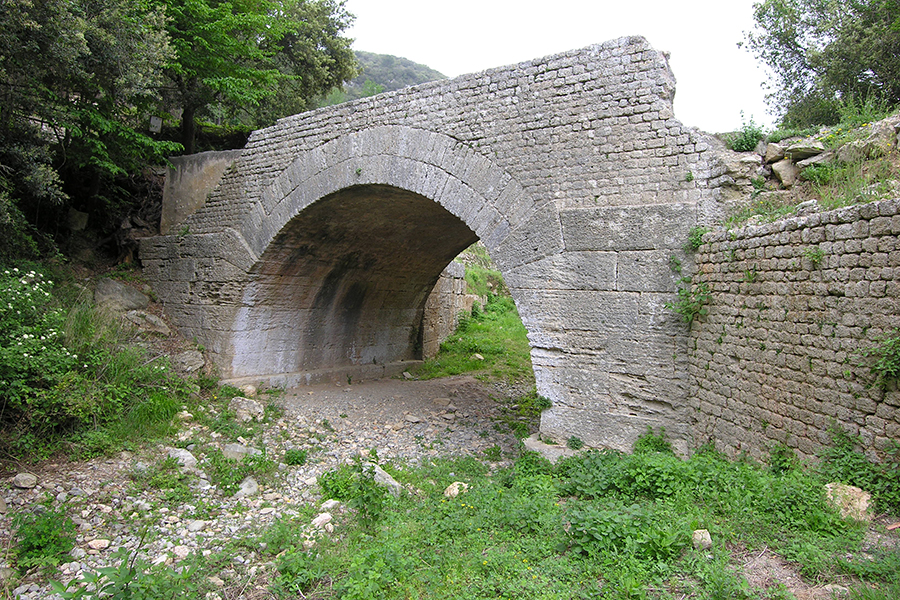
The Val Ponci stands as the ancient connection to Le Manie and onward to Noli.
In bypassing the treacherous cliffs of Capo Noli, the Via Julia Augusta (13-12 BC), linking Piacenza to southern France, carved its path through breathtaking internal routes adorned with remarkable engineering feats. Descending from the Magnone pass towards Finale, the Val Ponci segment boasts the presence of five impressive bridges, a testament to impeccable construction that facilitated safe passage across the streams.
The first bridge encountered, starting from Verzi and marking the last stretch toward the Trail del Marchesato, is known as the “Ponte delle Fate” (Bridge of the Fairies), named for its proximity to the eponymous cave and remains almost untouched. Similarly well-preserved are the third and fourth bridges, referred to as “delle Voze or Muto” and “dell’Acqua,” respectively. While the access ramp of the second bridge, the “Ponte Sordo,” stands, only a portion of the arch remains of the fifth, known as the “Ponte di Magnone.”
Rocca di Corno (only on 60KM Trail)
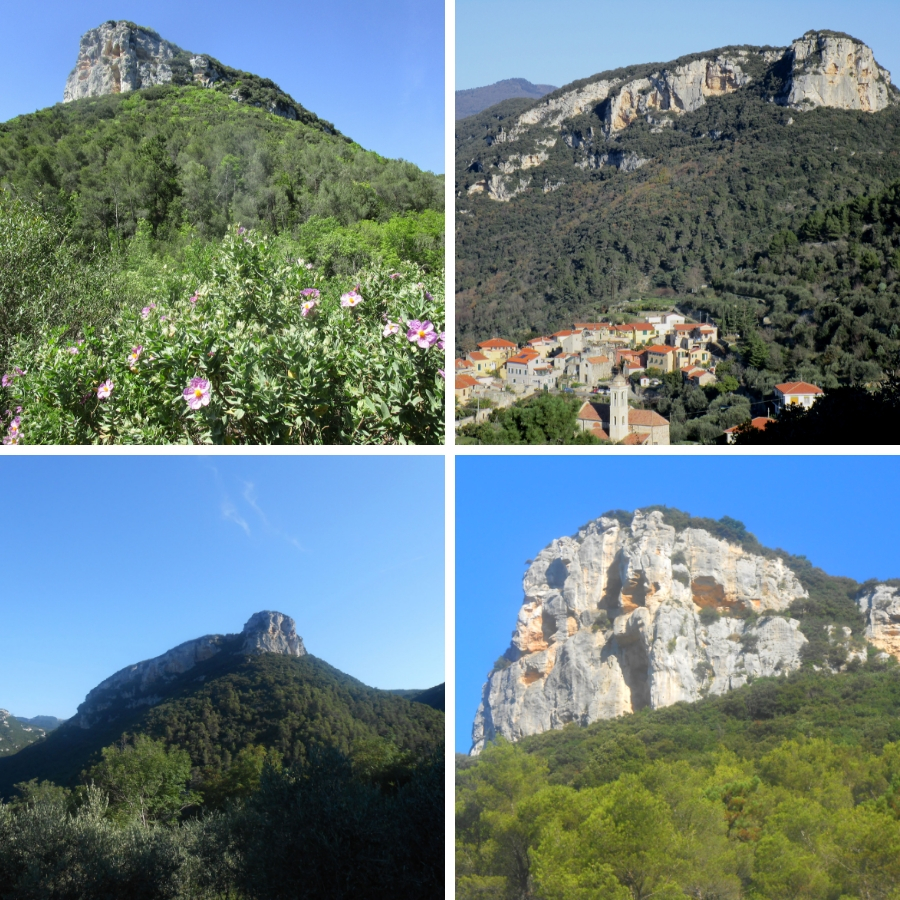
The towering Rocca di Corno (306 m) crowning over the Ponci Valley marks the birthplace of Finale Ligure’s inaugural climbing route.
Nestled away from the chilly winter winds, Rocca di Corno remains a bustling spot throughout the colder months. It owes its popularity not only to its remarkable climbing routes, adorned with pillars and dihedrals, but also to the awe-inspiring panoramic views from atop the rock pinnacle.
Rocca degli Uccelli (only on 38KM and 60KM Trails)
The striking wall of Rocca degli Uccelli, soaring up to 120 meters, ranks among the least frequented, if not the least visited, walls in the Finale Ligure region. It’s quite astonishing considering the top-notch quality of its sheer white rock walls, offering a refined climbing experience on smoother surfaces compared to other locales, boasting both single-pitch routes and extensive climbs.
Rocca degli Uccelli continues to be a haven for seasoned enthusiasts, still holding ample opportunities for fresh, unexplored routes.
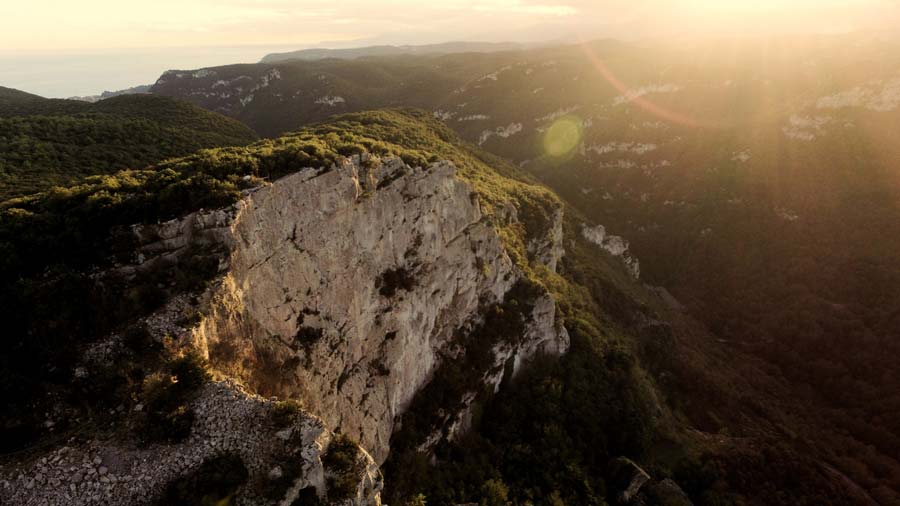
Boragni (only on 38KM and 60KM Trails)
Perched halfway up the slopes in the Sciusa stream valley, a stone’s throw from the picturesque village of Orco, Boragni finds itself amid terraced olive groves and vineyards, forming a charming cluster of Mediterranean-style dwellings.
This quaint hamlet stands as a testament to a fortified village built by local farmers as a defense against frequent Saracen raids that plagued even the hinterlands with their pillages and violence.
Arranged in a circular fashion, the buildings huddle closely together, featuring only a few small outward-facing openings, each secured with iron grilles. Within this protective embrace lie sheltered, small open spaces utilized as gardens and courtyards.
Boragni boasts a captivating passage adorned with stone vaults that traverses the village. This secure internal pathway suddenly blossoms with bursts of greenery from tiny gardens.
Boragni’s extraordinary natural setting makes it a haven for both hikers and climbers. Trails from here lead to the mesmerizing caves of Strapatente and Balconi, along with nearby rock climbing spots.
In the sprawling cliffs of the “Bastionata di Boragni,” towering above the village, relentless water erosion has carved a breathtaking landscape, filled with crevices, caves, and fissured walls hosting an array of climbing routes catering to various skill levels.
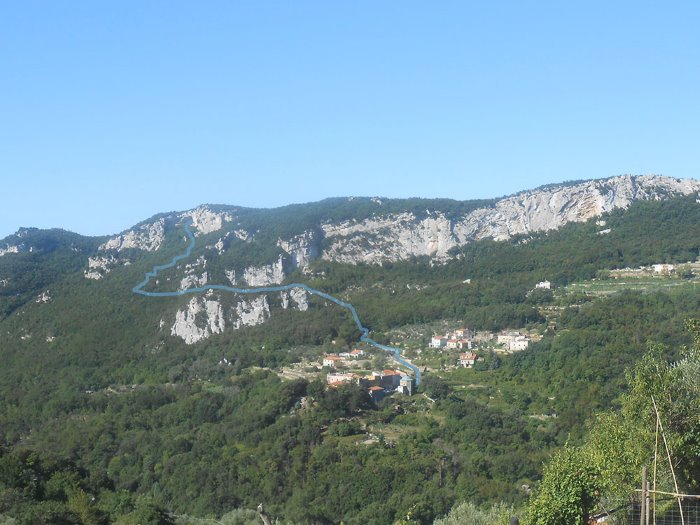
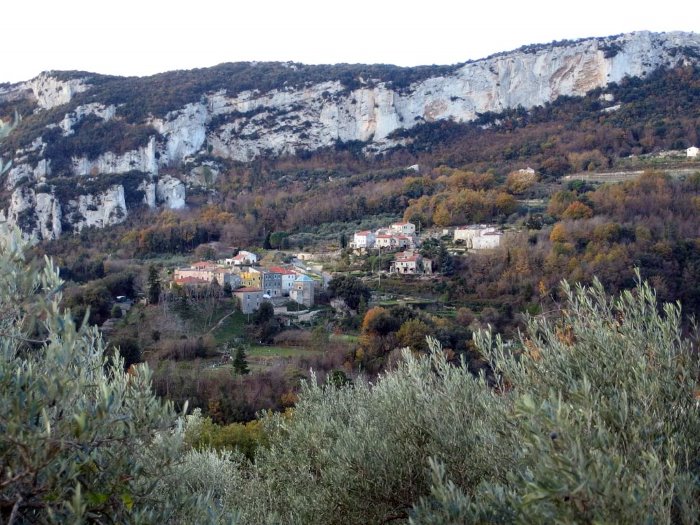
Grotta Strapatente (only on 38KM and 60KM Trails)
Located beneath the towering white cliffs of “Pietra di Finale,” within the Bastionata di Boragni, lies the Grotta Strapatente—a natural sloping gallery harking back to the Miocene era. This geological wonder serves as a passage cutting through the entire mountain.
The trail to the northern entrance begins from a small parking area above Boragni village, winding through an area rich in climbing walls and dense vegetation. Upon descent, guided by a flashlight, you’ll navigate a steep passage toward the southern entrance, surrounded by an array of stalactites, stalagmites and fully formed columns. The enchantment of witnessing the continuous drip of calcareous water adds an intriguing allure to the experience.
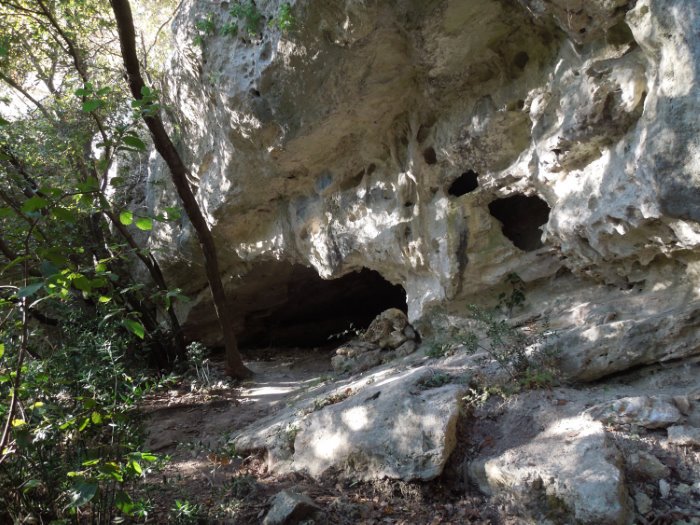
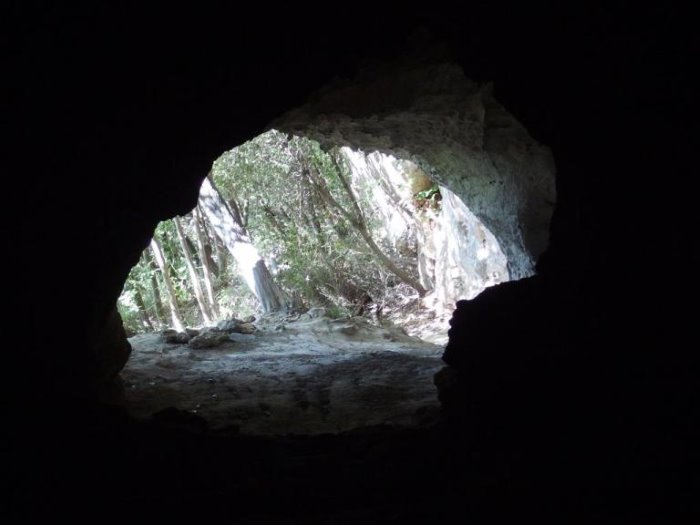
Grotta Castelletti
The Rocca Carpanèa is linked to the massive Rocca di Perti by way of a brief, wooded ridge crowned by an intricate rocky crest known as “I Castelletti.” Within its recesses lie several intriguing hollows, including the narrow Arma du Pilin and the distinctive small cave, Grotta dei Castelletti (or dell’Omo Bun). The latter, previously used as a dwelling in ancient times, retains to this day a hearth carved directly into the rock.
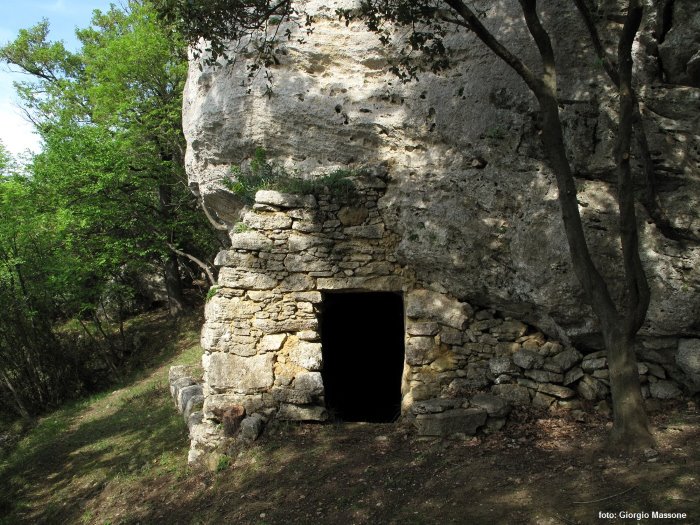
Rocca di Perti
The Rocca di Perti stands out as arguably the most significant climbing complex within the Finale Ligure area.
Geologically, the rock formations of Rocca di Perti are part of the “Pietra del Finale” formation, specifically classified as a subtype known as the “Membro del Monte Cucco” The origins of the Pietra del Finale, predominantly comprising bioclastic limestones (limestones formed from the cemented remains of organisms) and layers of sandy-conglomerate formations, date back to the middle to lower Miocene period, approximately 10-15 million years ago. These rock structures, though initially appearing solid and robust, exhibit susceptibility and permeability to environmental elements. Remarkably, the Finale Ligure area features numerous karst cavities formed by rainwater and infiltration. Concurrently, the cliffs often showcase shapes molded by surface erosion, such as alveolar cavities sculpted by the forces of wind and rain.
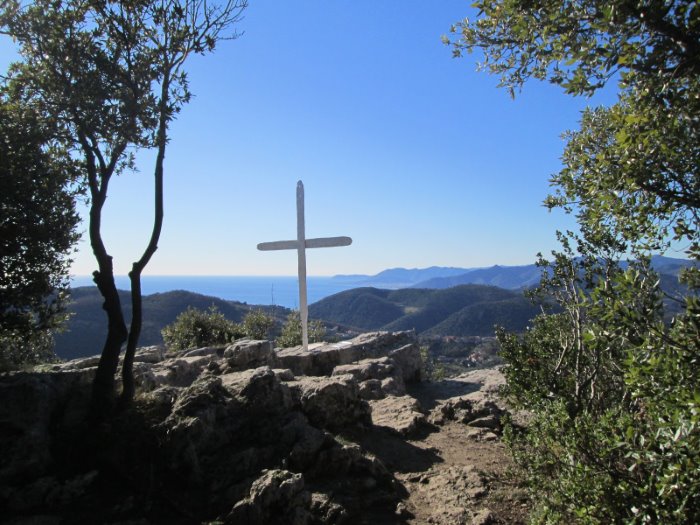
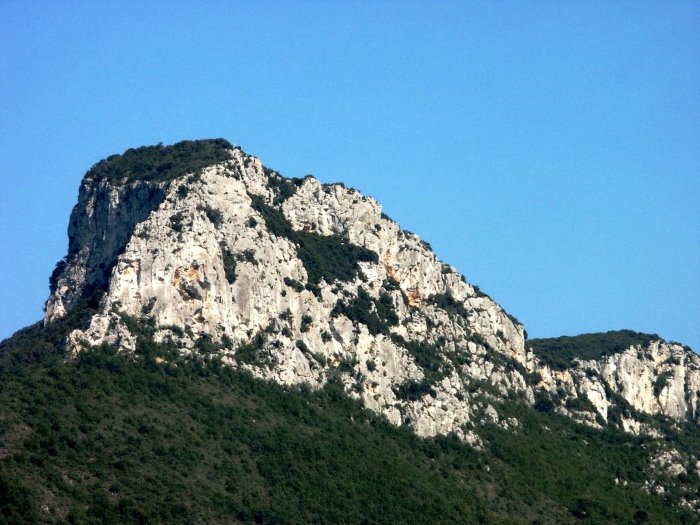
Castel Gavone
Castel Gavone, also referred to as Castel Govone, once stood proudly in Finale Ligure and was believed to have been among Italy’s grandest castles in its prime.
Around 1181, Enrico I Del Carretto, along with his son, chose to erect a feudal palace atop a commanding position, establishing it as the seat of the marchesato. Over time, this monumental structure, serving as the family’s principal residence, underwent expansions and fortifications.
The castle has weathered numerous historical shifts, enduring multiple demolitions and reconstructions. Notably, in 1490, the Tower of Diamonds was added to the complex, its facades adorned with intricately faceted stones and squares, lending a distinct and striking appearance to the entire edifice. The Tower sharply tapers to the south. Since 1989, Castel Gavone has been under the ownership of Finale Ligure.
